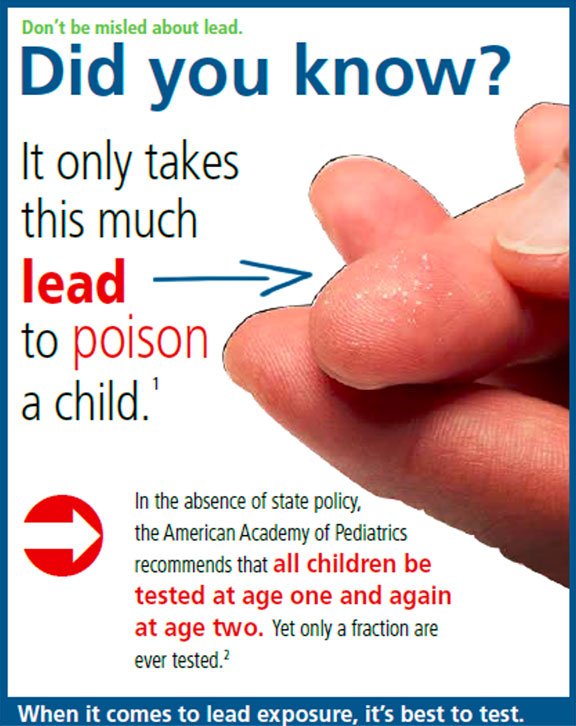


Organic lead. However, organic lead, such as tetraethyl lead, may enter through the skin tetraethyl lead, the main organic compound in leaded gasoline, is converted in the body to triethyl lead and inorganic lead.Most cases of lead poisoning are caused by inorganic lead lead may enter the body through ingestion, inhalation, or transdermal absorption ingestion is the most common source of lead poisoning in children because of their normal hand-to- mouth activities. Lead toxicity may be caused by inorganic or organic lead. Lead poisoning chiefly affects children younger than age 6 years and adults in lead-risk occupations.Overall, from 1999-2002, non-Hispanic blacks and Mexican Americans had higher percentages of elevated BLLs (1.4% and 1.5%, respectively) than did non-Hispanic whites (0.5%).In general, children with heavy exposure to automobile exhaust (in countries where leaded gasoline is still sold), lead-based paint, or home-industry manufacture of batteries, ceramics, or painted artifacts have high lead burdens.

Lead continues to be a significant public health problem in developing countries.Children who belong to minority populations or low-income families or who live in older homes are, particularly at risk.Nevertheless, the CDC estimates that at least 4 million US households have children living in them that are being exposed to high levels of lead, and approximately half a million US children age 1-5 years have blood lead levels above 5 µg/dL, the reference level at which CDC recommends public health actions be initiated.In May 2012, the CDC replaced the term “level of concern” with an upper reference interval value defined as the 97.5th percentile of BLLs in US children aged 1–5 years from two consecutive cycles of the National Health and Nutrition Examination Survey (NHANES).Īccording to the Centers for Disease Control and Prevention (CDC), the percentage of confirmed blood lead levels (BLLs) ≥10 µg/dL in US children younger than 72 months fell from 7.61% in 1997 to 0.56% in 2013.In 1991, the Centers for Disease Control and Prevention (CDC) defined blood lead levels (BLLs) ≥10 µg/dL as the “level of concern” for children aged 1–5 years.Lockhart Gibson concluded that lead paint in the home was responsible for poisoning children despite Gibson’s work, and subsequent confirmation of it in the US medical literature, lead was not banned from US household paints until 1978. Lead poisoning (also known as plumbism) was common in Roman times because of the use of lead in water pipes and in wine containers.Lead is a ubiquitous and versatile metal it has been extensively used since ancient times, and the history of public exposure to lead in food and drink is extensive.Lead poisoning is a worldwide pediatric problem.


 0 kommentar(er)
0 kommentar(er)
